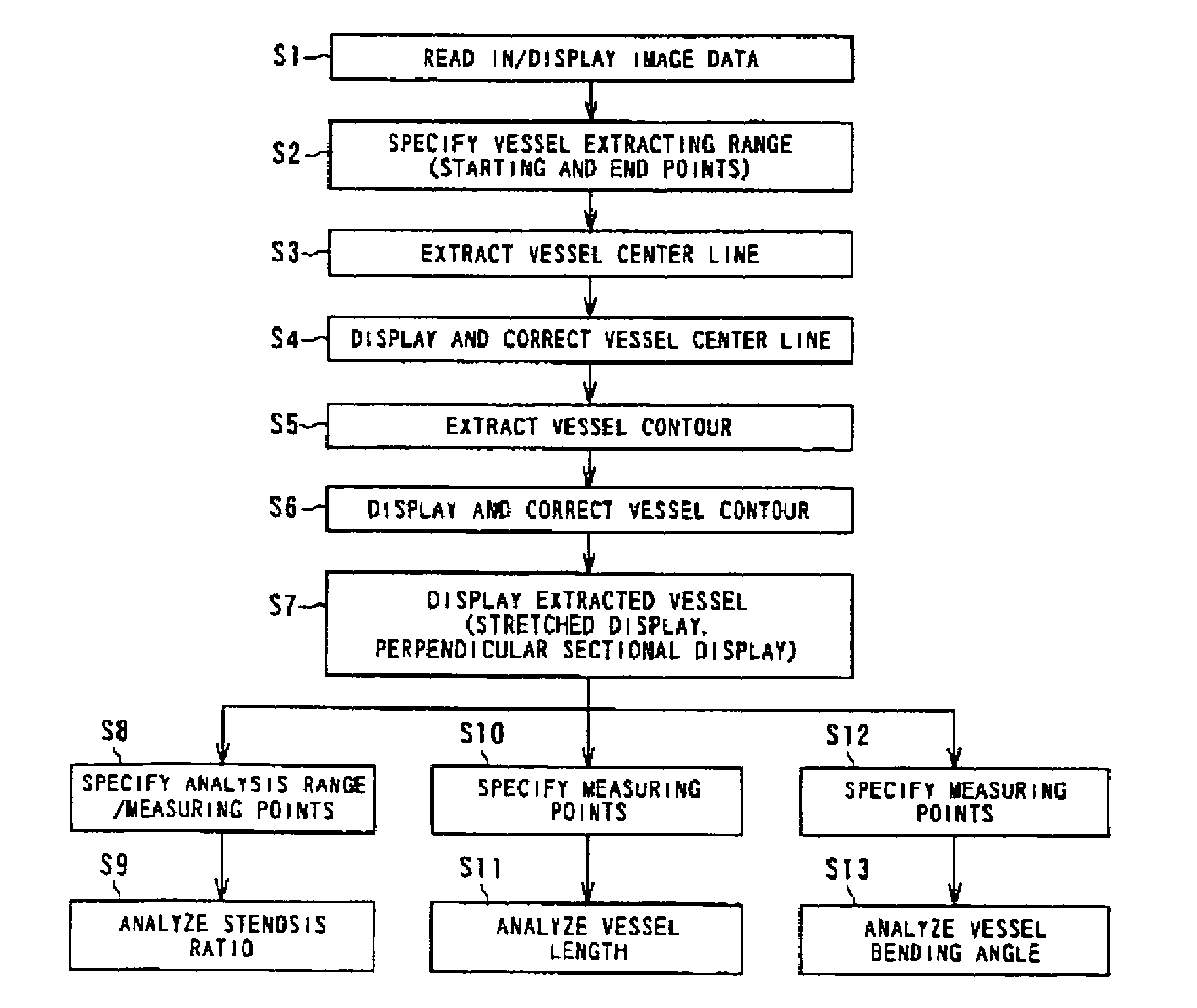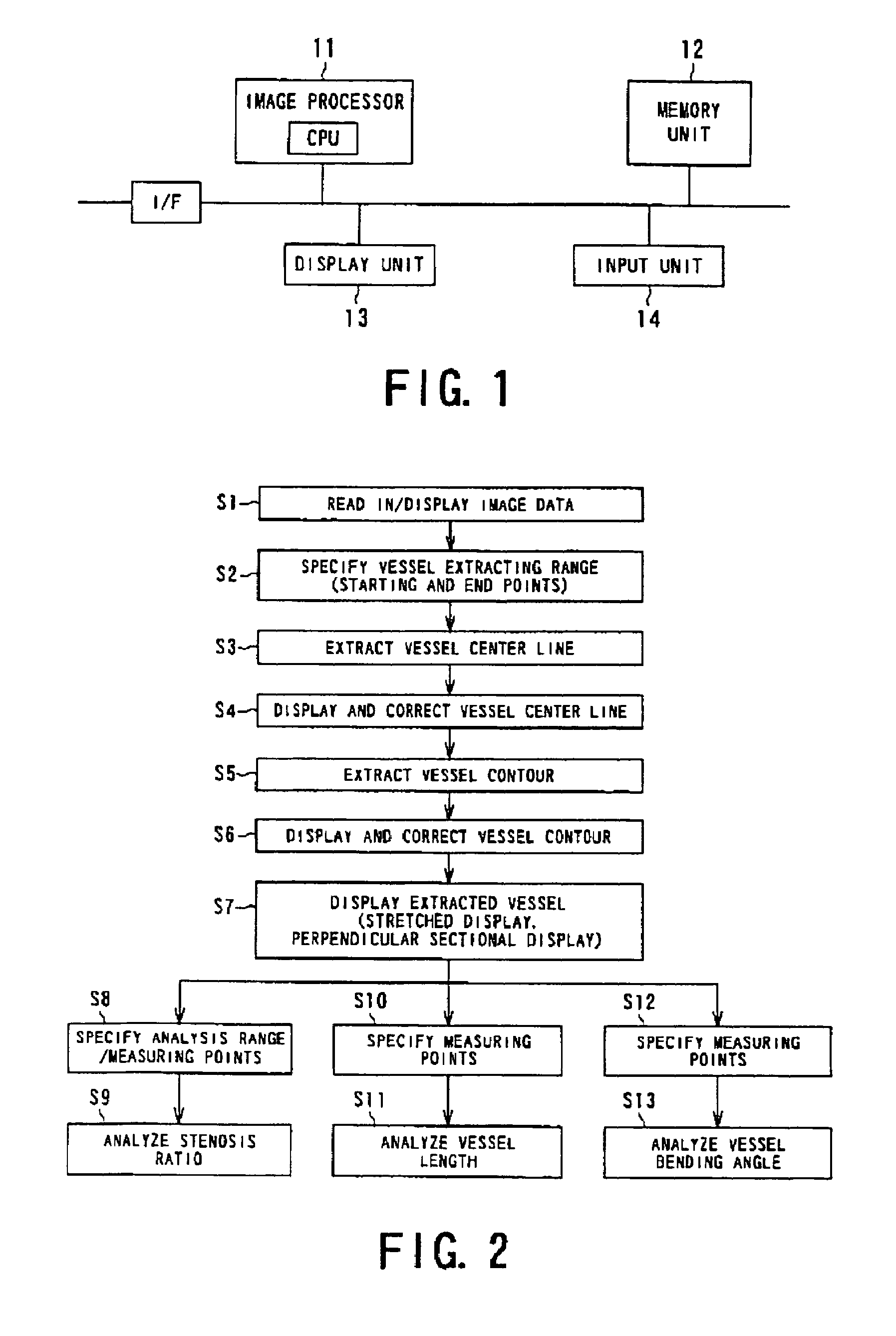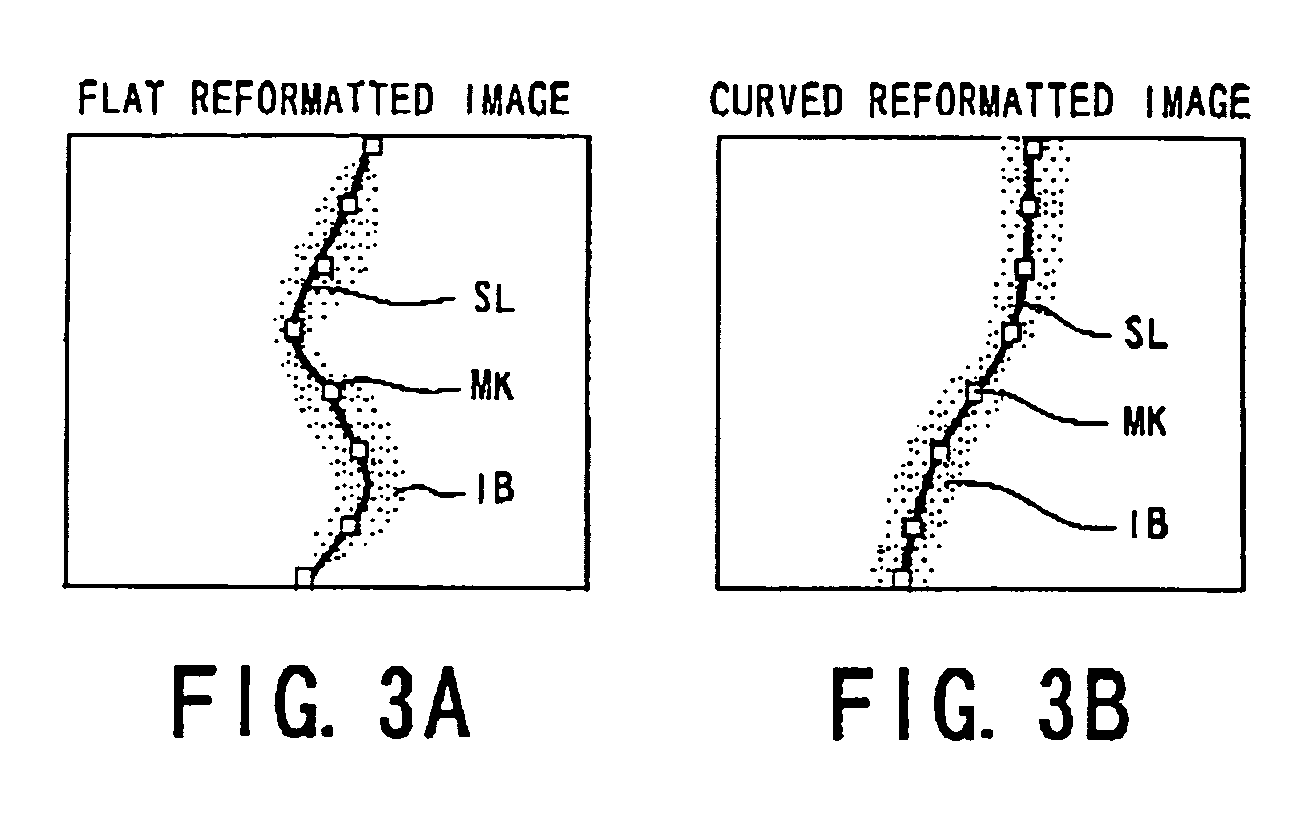Processor for analyzing tubular structure such as blood vessels
a tubular structure and processing technology, applied in the field of processing for analyzing a tubular structure, can solve the problems of x-ray angiographic imaging at present being inadequate at rendering capillaries, diagnosis tends to underestimate the degree of blood vessel stenosis, and limited topological abnormality assessment based on this imaging. to achieve the effect of reducing the operational burden
- Summary
- Abstract
- Description
- Claims
- Application Information
AI Technical Summary
Benefits of technology
Problems solved by technology
Method used
Image
Examples
first embodiment
[0073]A first embodiment will be described with reference to FIGS. 1 to 14.
[0074]As shown in FIG. 1, the image processor of this embodiment is provided as a computer device connected online to a medical modality via a communication line as a computer device incorporated integrally with the medical modality, or as an offline computer device separately from the medical modality.
[0075]As shown in FIG. 1, this computer device comprises an image processor 11 including a CPU and a memory, a memory unit 12 storing programs and processed data, a display unit 13, and an input unit 14. As described above, the computer device has a function of performing data communication with outside as required.
[0076]Three-dimensional (solid-body) image data of a subject collected by a diagnostic imaging apparatus (medical modality), such as an X-ray CT scanner or an MRI, are sent online or offline to the memory unit 12. These three-dimensional image data are stored in a large-capacity memory medium, such a...
second embodiment
[0210]A second embodiment of the processor for analyzing a tubular structure of the present invention will be described with reference to FIGS. 24 to 33.
[0211]This embodiment provides a processor for analyzing a tubular structure which permits efficient identification of the sectional shape in the three-dimensional display of a vessel image, particularly observation of portions around a stenosis site and the position in the whole blood vessels. More specifically, the processor for analysis has a function permitting correction of the contour of an extracted area in a vessel stretched image, a straight view, and a perpendicular sectional image, a perpendicular view; a function to display in parallel a stenosis ratio curve on the vessel stretched image; a function to cut an area to be analyzed and three-dimensionally display the cut area; a jumping function of the image display position, and a parametric display function.
[0212]The processor for analyzing a tubular structure in this emb...
third embodiment
[0300]A third embodiment of the processor for analyzing a tubular structure of the present invention will now be described with reference to FIGS. 34 to 40.
[0301]This embodiment is intended to permit identification of the sectional shape in the three-dimensional display of a vessel image, particularly, easy and accurate identification of the three-dimensional secular change in lumps in the blood vessel to improve the accuracy determination of adaptability to surgery. The processor for analyzing of this embodiment is schematically based on the process comprising the steps of extracting the vessel center line and vessel areas (including blood vessel lumens and blood clot site) from present and past three-dimensional image data; specifying the measuring range; specifying branching position serving as a reference before and after the measuring range and aligning the positions; and carrying out a quantitative analysis and display of the result of analysis regarding lumps on the basis of ...
PUM
 Login to View More
Login to View More Abstract
Description
Claims
Application Information
 Login to View More
Login to View More - R&D
- Intellectual Property
- Life Sciences
- Materials
- Tech Scout
- Unparalleled Data Quality
- Higher Quality Content
- 60% Fewer Hallucinations
Browse by: Latest US Patents, China's latest patents, Technical Efficacy Thesaurus, Application Domain, Technology Topic, Popular Technical Reports.
© 2025 PatSnap. All rights reserved.Legal|Privacy policy|Modern Slavery Act Transparency Statement|Sitemap|About US| Contact US: help@patsnap.com



